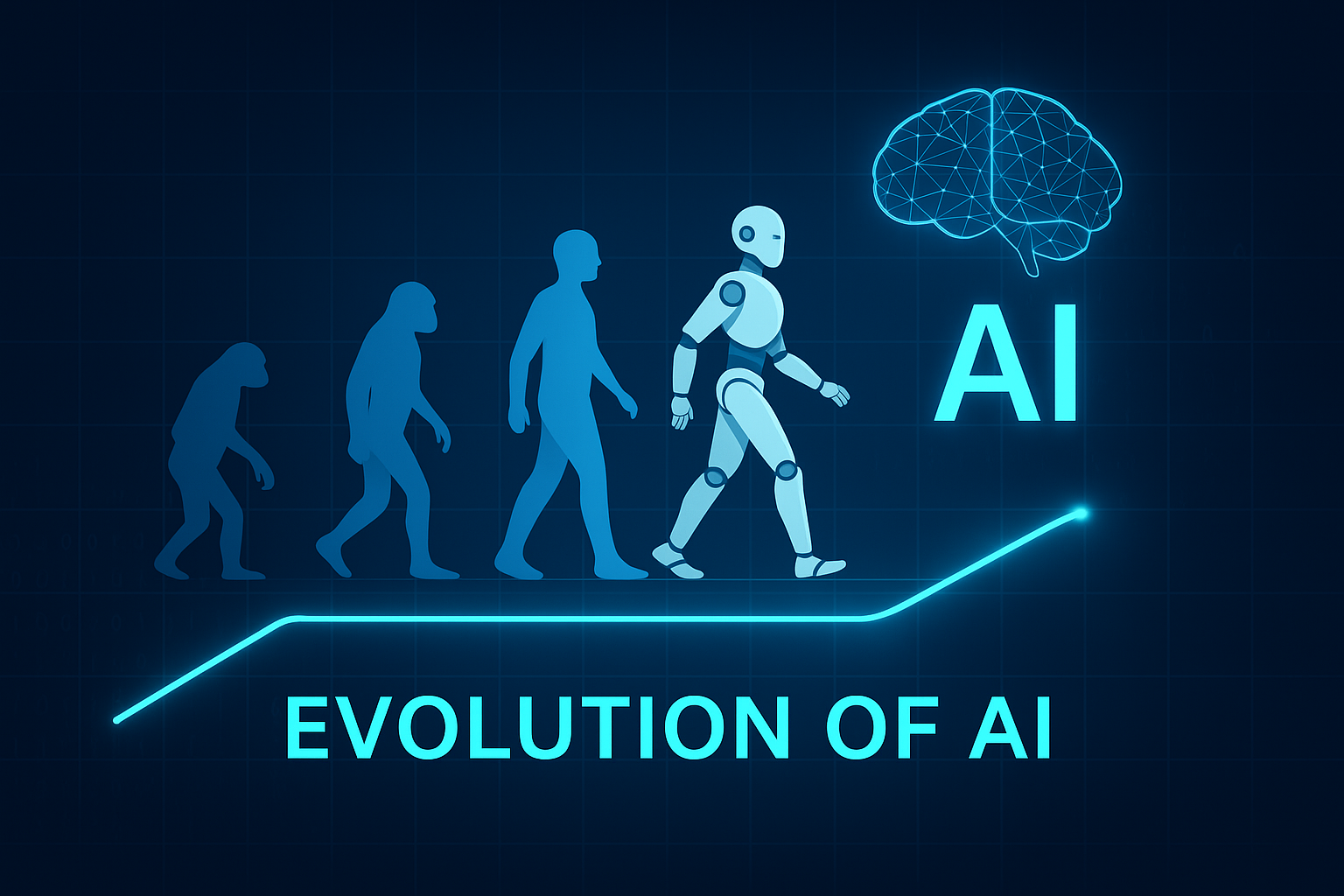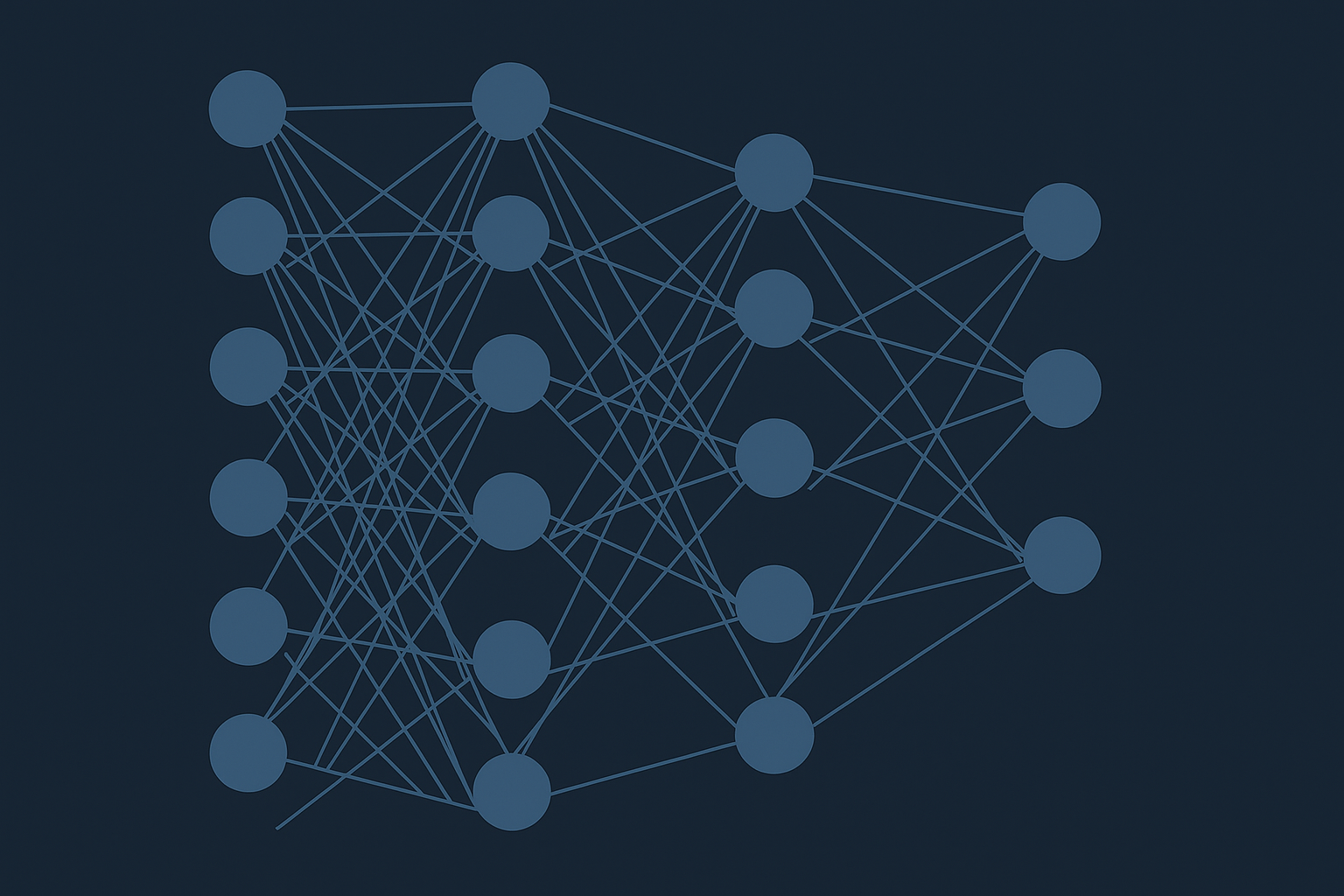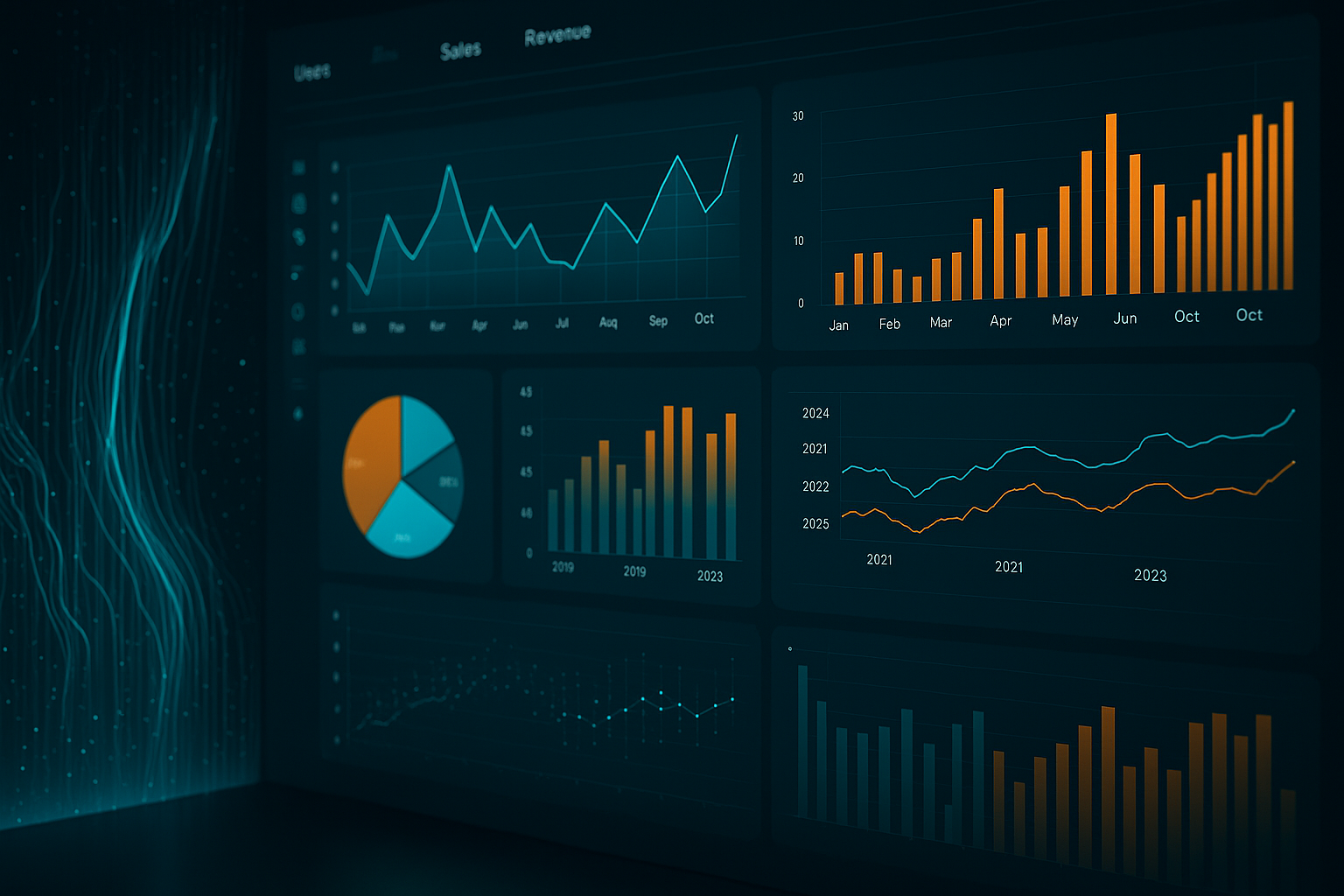The Evolution of AI: Where It Started, What It's Made Of, and Where It's Going
Published by Reply Automation | Reading time: 8 minutes
Artificial Intelligence isn't just the latest tech buzzword—it's the culmination of decades of human ingenuity, mathematical breakthroughs, and computational advances. As business owners increasingly turn to AI solutions like Reply Automation to streamline their operations, understanding AI's journey helps us appreciate both its current capabilities and future potential.
The Humble Beginnings: Where AI Started
The Dreamers and Mathematicians (1940s-1950s)

AI's story begins not in Silicon Valley, but in the minds of mathematicians and philosophers who dared to ask: "Can machines think?"
In 1943, Warren McCulloch and Walter Pitts created the first mathematical model of a neural network—essentially trying to mimic how brain cells work using math. Think of it like trying to recreate a recipe by understanding each individual ingredient and how they interact.
The real spark came in 1950 when Alan Turing proposed his famous "Turing Test"—if a machine could convince a human it was human through conversation, could we call it intelligent? This question still drives AI development today, including the conversational AI that powers Reply Automation's customer service solutions.
The Birth of a Field (1956)
The term "Artificial Intelligence" was officially coined at Dartmouth College in 1956 during a summer workshop. Researchers John McCarthy, Marvin Minsky, Nathaniel Rochester, and Claude Shannon gathered with one ambitious goal: make machines use language, form abstractions, solve problems, and improve themselves.
Sound familiar? These are exactly the capabilities that modern AI assistants use to handle customer emails, schedule appointments, and manage business communications automatically.
The Building Blocks: What Makes AI Smart
Neural Networks: The Brain-Inspired Foundation

At its core, AI mimics how human brains work. Our brains have billions of neurons that connect and communicate. AI uses "artificial neural networks"—mathematical models that simulate these connections.
Here's a simple way to think about it: Imagine teaching a child to recognize a dog. You show them thousands of pictures, pointing out ears, tails, fur. Eventually, they can identify any dog, even breeds they've never seen. Neural networks learn the same way, but with data instead of pictures.
Machine Learning: The Learning Engine
Machine learning is AI's ability to improve without being explicitly programmed for every scenario. There are three main types:
Supervised Learning: Like having a teacher show you the right answers
- Example: Training AI to categorize customer emails as "urgent," "booking request," or "general inquiry"
Unsupervised Learning: Finding patterns without being told what to look for
- Example: Discovering that customers who email on weekends need different response styles
Reinforcement Learning: Learning through trial and error with rewards
- Example: AI getting better at scheduling by receiving feedback on successful bookings
Deep Learning: The Pattern Detective
Deep learning uses multiple layers of neural networks to find increasingly complex patterns. It's like having a team of detectives, where each one looks for different clues:
- Layer 1: Detects basic features (Is this text formal or casual?)
- Layer 2: Identifies context (Is this a complaint or compliment?)
- Layer 3: Understands intent (What does the customer actually want?)
- Layer 4: Determines action (What's the best response?)
This layered approach is why modern AI can understand nuanced customer communications and respond appropriately—a key feature of Reply Automation's email management system.
The Intelligence Explosion: How AI Keeps Getting Smarter
The Data Revolution

AI gets smarter through three key factors:
More Data: Every email, phone call, and customer interaction creates training data. The internet generates 2.5 quintillion bytes of data daily—fuel for AI systems to learn from.
Better Algorithms: Researchers constantly develop more efficient ways for AI to process information. What took weeks to compute in 2010 now happens in seconds.
Increased Computing Power: Modern processors can handle trillions of calculations per second, allowing AI to process complex patterns in real-time.
Transfer Learning: Standing on Giants' Shoulders
One of AI's most powerful recent developments is transfer learning—the ability to apply knowledge from one domain to another. It's like a master chef who can adapt their knife skills from French cuisine to Japanese cooking.
For business applications, this means an AI trained on millions of customer service interactions can quickly adapt to your specific business, understanding your unique products, services, and customer base within days rather than months.
Continuous Improvement: The Learning Never Stops
Modern AI systems don't just learn once and stop. They continuously analyze new interactions, identifying what works and what doesn't. This means your AI assistant gets better at handling your customers over time, learning their preferences, common questions, and optimal response timing.
The Road Ahead: Where AI Is Going
Artificial General Intelligence (AGI): The Holy Grail
Currently, AI excels at specific tasks—like Reply Automation's email management or voice assistance. But researchers are working toward Artificial General Intelligence (AGI)—AI that can understand, learn, and apply knowledge across any domain, just like humans.
While AGI remains years away, the stepping stones are already improving business operations:
- Better Natural Language Understanding: AI that truly comprehends context and nuance
- Multimodal Intelligence: AI that can process text, voice, images, and video simultaneously
- Emotional Intelligence: AI that recognizes and responds to emotional cues in customer communications
Industry Transformation: AI in Every Business

The next decade will see AI integration become as essential as having a website or email address. Key developments include:
Predictive Customer Service: AI that anticipates customer needs before they reach out
- Example: Automatically sending appointment reminders when weather might cause delays
Real-time Decision Making: AI that analyzes market conditions and adjusts business strategies instantly
- Example: Dynamic pricing based on demand patterns and competitor analysis
Personalized Experiences: AI that creates unique interactions for each customer
- Example: Customized communication styles based on individual customer preferences
Ethical AI: Building Responsibly
As AI becomes more powerful, ensuring it serves humanity's best interests becomes crucial. This includes:
Transparency: Understanding how AI makes decisions Fairness: Ensuring AI doesn't discriminate or show bias Privacy: Protecting customer data while improving service Human Oversight: Maintaining human control over important decisions
Why This Matters for Your Business Today
Understanding AI's evolution isn't just academic—it directly impacts your business decisions. Companies that embrace AI early gain significant advantages:
Competitive Edge: While competitors handle emails manually, AI-powered businesses respond instantly, 24/7
Scalability: AI grows with your business without proportional increases in staff costs
Customer Satisfaction: Consistent, fast, accurate responses improve customer relationships
Data Insights: AI reveals patterns in customer behavior that humans might miss
The Bottom Line: AI's Journey Continues

From McCulloch and Pitts' first neural network equations to today's sophisticated business automation systems, AI has traveled an remarkable journey. What started as academic curiosity has become essential business infrastructure.
The businesses thriving today aren't waiting for AI to become "perfect"—they're leveraging current capabilities to solve real problems. Email automation, appointment scheduling, customer service management—these AI applications are already transforming how companies operate.
As AI continues evolving, one thing remains constant: the businesses that understand and adopt these technologies early will lead their industries. The question isn't whether AI will impact your business—it's whether you'll be leading that change or playing catch-up.
Ready to experience AI's power in your business? Reply Automation brings cutting-edge AI technology to your customer communications, handling emails, calls, and bookings automatically. See how our AI evolution can transform your business operations.
[Get your free demo today and discover why businesses call Reply Automation a game-changer.]
About Reply Automation: We specialize in AI-powered business communication solutions that help companies manage customer interactions efficiently and professionally. Our technology handles emails, phone calls, and appointment booking automatically, allowing business owners to focus on growth while maintaining excellent customer service.